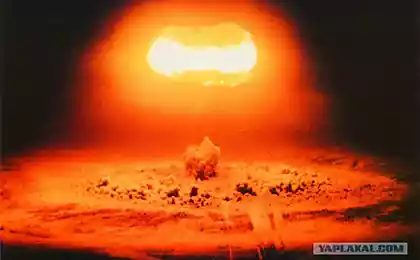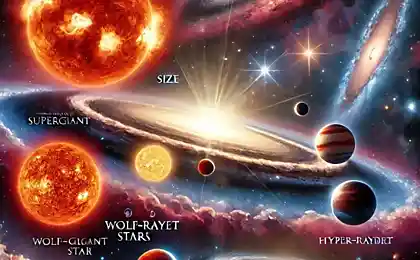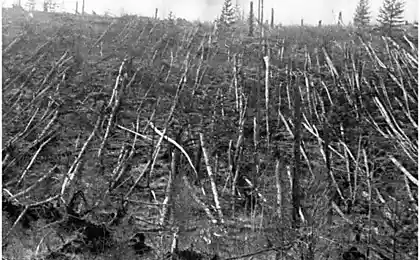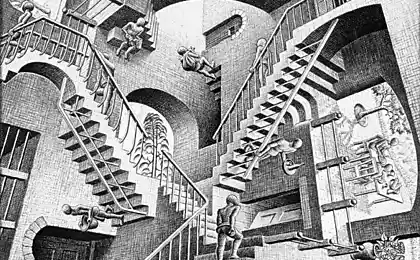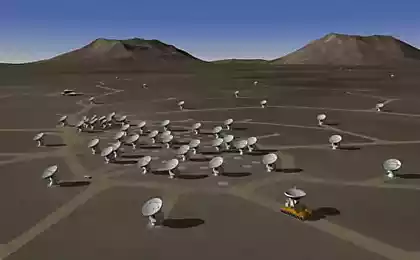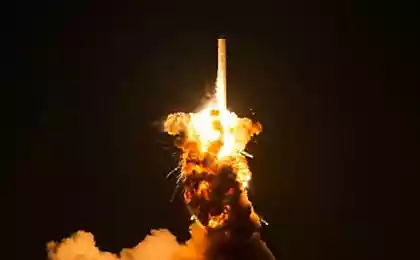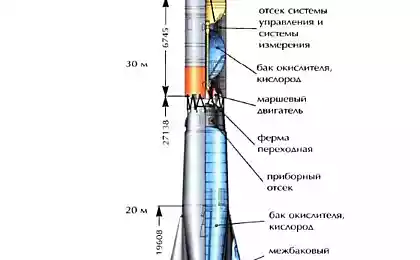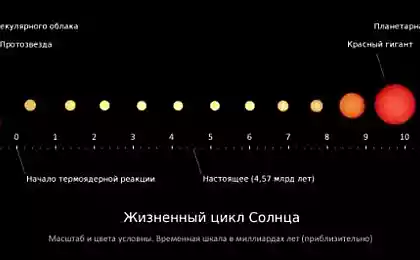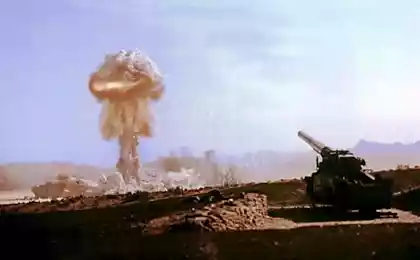605
Why star burst
Star can die in different ways, but usually people think that the stars explode.The term "supernova" describes the explosion with the release of large amounts of energy at a time when certain stars reach a certain stage of development. A supernova can Shine brighter than entire galaxies, and destroy all that is in the hundred of light years from them. But supernova is not just an amazing natural phenomenon. These are the most important phenomena necessary for the development of complex matter and including life.
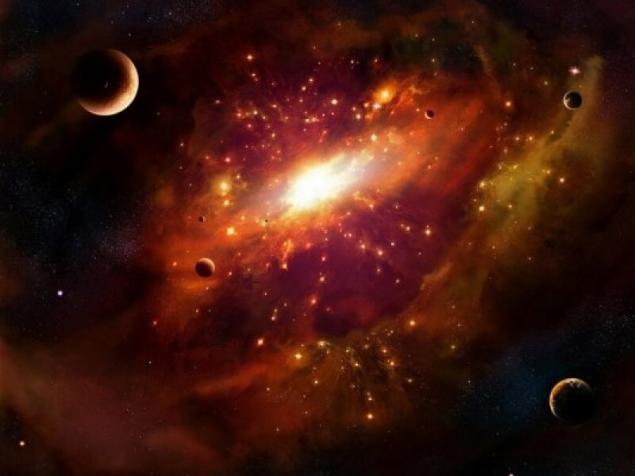
Search supernova astronomers
To begin with, like go supernova. When one is going to place enough gas, its mass begins to exert a gravitational effect, focused in the center of the cloud. When the pressure exceeds a certain limit, the hydrogen atoms in the center of the sphere begin to undergo fusion, igniting the gas and turns it into a star. But the lifetime of the star and its burning there is opposition between the pressure of the reaction temperature, directed outwards, and the gravitational compression is directed inward.
Over billions of years burning existing outward pressure decreases and the gravitational force is about the same. Therefore, the cooling of the smaller stars they gravity begins to win – but because these stars are not very large, gravity does not lead to anything other than how to hold matter together. This safe cold star called a white dwarf. Limit on the mass required for the occurrence of a supernova is called the Chandrasekhar limit, and equal to about 1.4 solar masses. If the star is less, then it will go off peacefully.
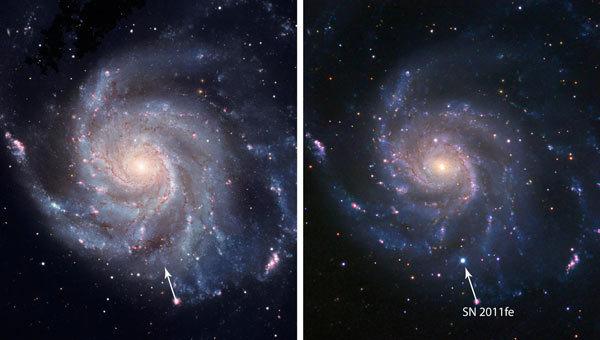
Supernovae are so bright that they stand out even against the galaxies
In this case the white dwarf can still light at the end of life. In principle, such stars can be lit again. It can attract enough mass that the pressure at the center increased greatly, and the synthesis of carbon. Then begins the unstable synthesis reaction, which will lead to an explosion.
Or, if the core of a white dwarf made primarily of neon, its core collapses, leading to the explosion – but only after it left the neutron star. Almost always this happens in binary systems where one star approaching the Chandrasekhar limit of, sucking matter from its partner. Because astronomers are unable to explore the contents of nucleus of a star, they don't know which of two ways it will develop.
In stars more massive than 1.4 solar masses, the life cycle of another. The red giant slowly burn, while its gravity is strong enough to cause the collapse of the core and a supernova explosion. Stars with a mass between 1.4 and 3 solar quanta collapse into the dark of the neutron star.
Stars heavier than the quanta collapse into the dark, too, but it does not stop until long as does not turn into a black hole. This is a fairly rare event. Although black holes in the Universe quite a lot, they are much less than other types of stars.
A supernova can appear in other ways. For example, although most white dwarfs slowly gaining mass, some stars can get fast weight gain (e.g., from a collision with another star) and quickly overcome the Chandrasekhar limit is so fast that they will not have time to start to collapse.
At supernova, there are several uses for astronomy. For example, type Ia supernovas (white dwarf, who carried out carbon synthesis), sends in the space of uniform signals. Therefore, they are dubbed "standard candles" because they serve as the academic standards for optical measurements. However, recent studies indicate that these candles are not so standard, as previously thought.
But it was that supernova is not only cool and useful phenomenon. To produce elements heavier than carbon and neon, ordinary stars do not fit. This can only be a supernova, dying star.
Almost all of what we're dealing with, at some point it was thrown out by the star in the last moments of her life. Earth – rocky set of remains, the ejected supernova. As well as all comets, asteroids and all the rest, consisting of more heavy material. And we ourselves are composed of matter, taken on Earth, created from the wreckage of a supernova. published
P. S. And remember, only by changing their consumption — together we change the world! ©
Join us in Facebook , Vkontakte, Odnoklassniki
Source: geektimes.ru/post/268286/

Search supernova astronomers
To begin with, like go supernova. When one is going to place enough gas, its mass begins to exert a gravitational effect, focused in the center of the cloud. When the pressure exceeds a certain limit, the hydrogen atoms in the center of the sphere begin to undergo fusion, igniting the gas and turns it into a star. But the lifetime of the star and its burning there is opposition between the pressure of the reaction temperature, directed outwards, and the gravitational compression is directed inward.
Over billions of years burning existing outward pressure decreases and the gravitational force is about the same. Therefore, the cooling of the smaller stars they gravity begins to win – but because these stars are not very large, gravity does not lead to anything other than how to hold matter together. This safe cold star called a white dwarf. Limit on the mass required for the occurrence of a supernova is called the Chandrasekhar limit, and equal to about 1.4 solar masses. If the star is less, then it will go off peacefully.

Supernovae are so bright that they stand out even against the galaxies
In this case the white dwarf can still light at the end of life. In principle, such stars can be lit again. It can attract enough mass that the pressure at the center increased greatly, and the synthesis of carbon. Then begins the unstable synthesis reaction, which will lead to an explosion.
Or, if the core of a white dwarf made primarily of neon, its core collapses, leading to the explosion – but only after it left the neutron star. Almost always this happens in binary systems where one star approaching the Chandrasekhar limit of, sucking matter from its partner. Because astronomers are unable to explore the contents of nucleus of a star, they don't know which of two ways it will develop.
In stars more massive than 1.4 solar masses, the life cycle of another. The red giant slowly burn, while its gravity is strong enough to cause the collapse of the core and a supernova explosion. Stars with a mass between 1.4 and 3 solar quanta collapse into the dark of the neutron star.
Stars heavier than the quanta collapse into the dark, too, but it does not stop until long as does not turn into a black hole. This is a fairly rare event. Although black holes in the Universe quite a lot, they are much less than other types of stars.
A supernova can appear in other ways. For example, although most white dwarfs slowly gaining mass, some stars can get fast weight gain (e.g., from a collision with another star) and quickly overcome the Chandrasekhar limit is so fast that they will not have time to start to collapse.
At supernova, there are several uses for astronomy. For example, type Ia supernovas (white dwarf, who carried out carbon synthesis), sends in the space of uniform signals. Therefore, they are dubbed "standard candles" because they serve as the academic standards for optical measurements. However, recent studies indicate that these candles are not so standard, as previously thought.
But it was that supernova is not only cool and useful phenomenon. To produce elements heavier than carbon and neon, ordinary stars do not fit. This can only be a supernova, dying star.
Almost all of what we're dealing with, at some point it was thrown out by the star in the last moments of her life. Earth – rocky set of remains, the ejected supernova. As well as all comets, asteroids and all the rest, consisting of more heavy material. And we ourselves are composed of matter, taken on Earth, created from the wreckage of a supernova. published
P. S. And remember, only by changing their consumption — together we change the world! ©
Join us in Facebook , Vkontakte, Odnoklassniki
Source: geektimes.ru/post/268286/


